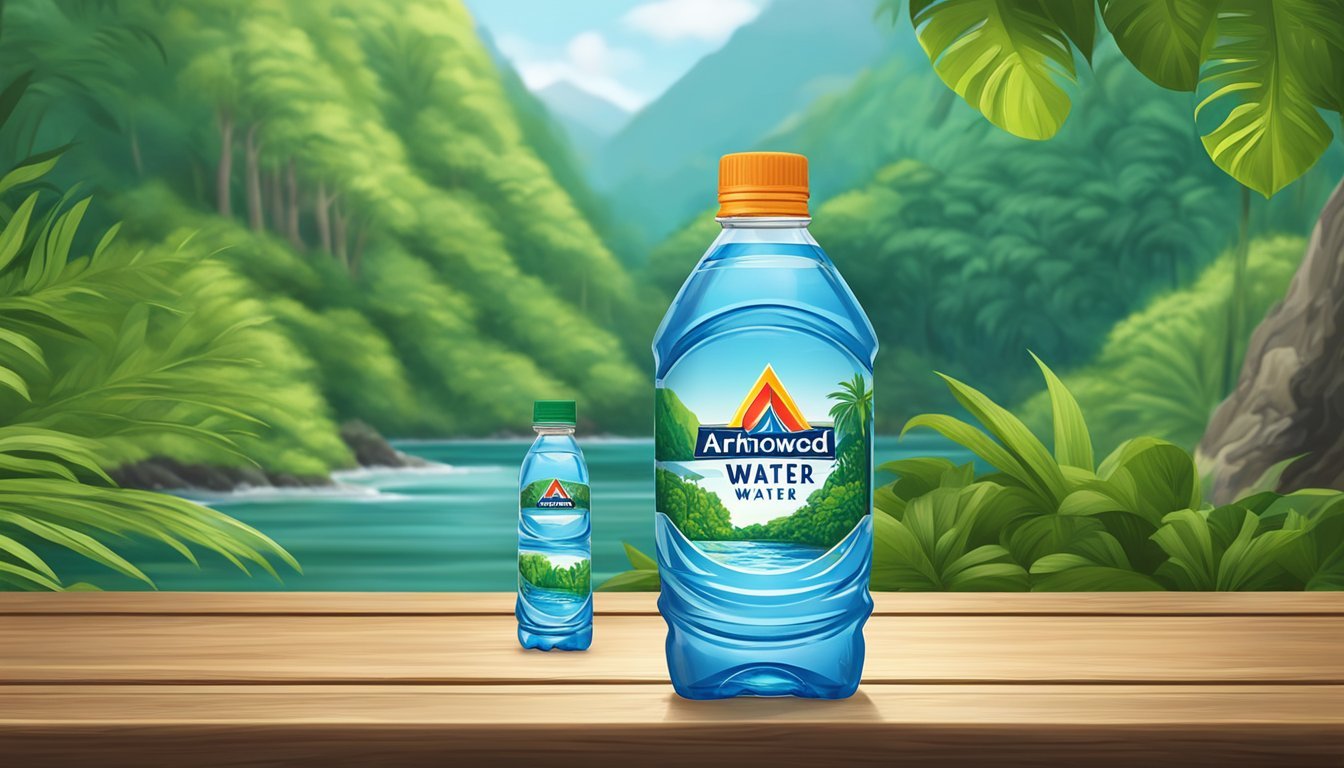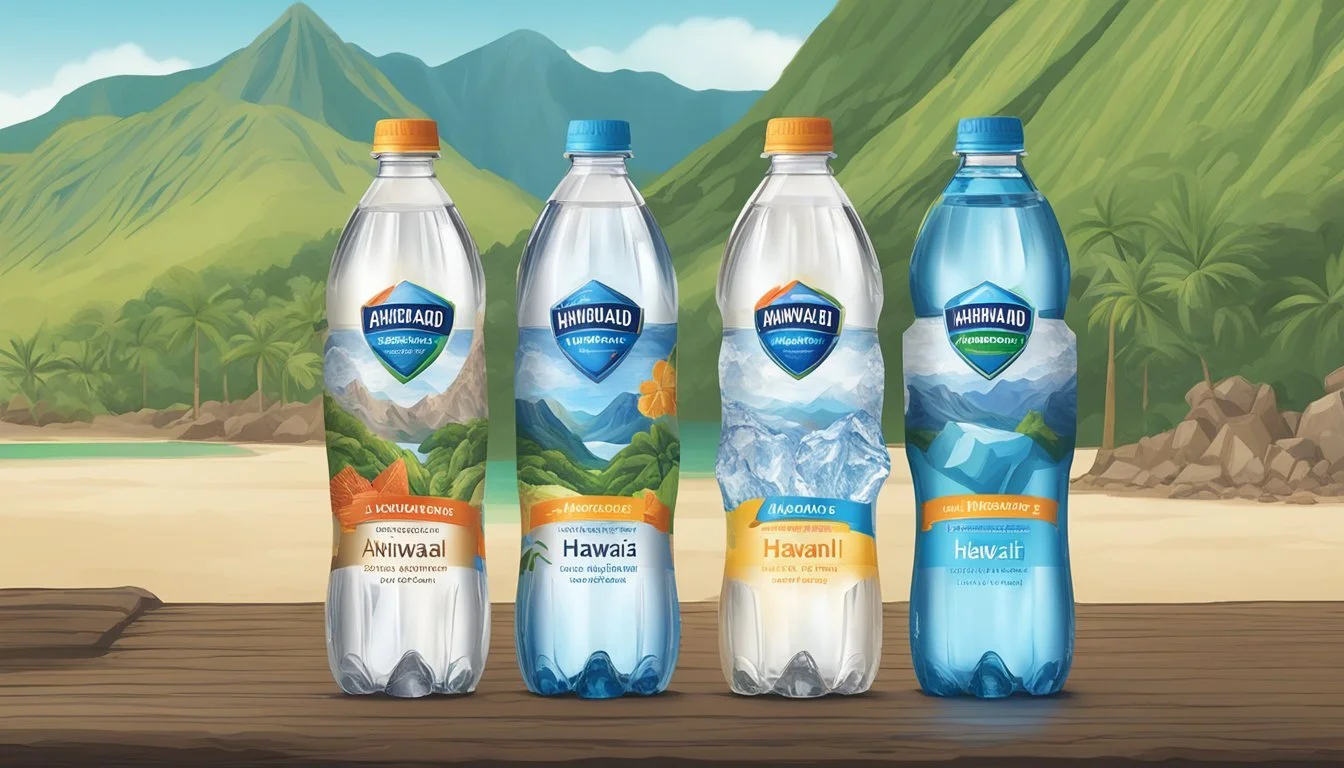Arrowhead vs. Hawai’i Volcanic
Bottled Water Comparison
Bottled water has long been a go-to choice for those seeking a convenient, clean, and refreshing hydration option. Two notable contenders in the market are Arrowhead and Hawai’i Volcanic. While Arrowhead, sourced from mountain springs in the western United States and Canada, offers affordability and wide accessibility, Hawai’i Volcanic provides a premium experience with its distinctive taste derived from Hawaiian volcanic filters.
Arrowhead’s reputation for being a light, crisp, and inexpensive option makes it appealing for everyday hydration. Its slightly astringent finish is appreciated by many who prefer a straightforward, unpretentious bottle of water. Hawai’i Volcanic, on the other hand, is celebrated for its volcanic filtration process, which imparts a unique mineral quality and a refreshing taste that stands out amid a crowded market of generic options.
For consumers deciding between these two brands, the choice often depends on personal preference and priorities. Whether it's the wider availability and consistent quality of Arrowhead or the exclusive and rich flavor profile of Hawai’i Volcanic, each bottled water brand brings a unique value proposition to the table.
The Importance of Water Quality and Safety
Ensuring quality and safety in drinking water is vital for health and well-being. Key factors include compliance with regulations and understanding potential contaminants.
Regulations and Standards
Regulations ensure drinking water meets strict safety standards. The EPA (Environmental Protection Agency) governs tap water in the U.S. through the Safe Drinking Water Act, mandating regular testing and setting maximum levels for various contaminants.
Bottled water, on the other hand, is regulated by the FDA (Food and Drug Administration). The FDA's regulations align with those of the EPA but may also include additional standards specific to bottled water. Both agencies aim to ensure that water is free from harmful pathogens, chemicals, and other unsafe substances.
Understanding Contaminants
Contaminants in water can pose serious health risks, ranging from mild gastrointestinal discomfort to severe diseases. Common contaminants include bacteria (e.g., E. coli), chemicals (like arsenic and nitrates), and PFAS (per- and polyfluoroalkyl substances).
Testing for these contaminants is essential for both tap and bottled water. For instance, Arrowhead water has faced scrutiny for contaminants such as arsenic, nitrates, and bacteria like coliform. Consumers should regularly check water quality reports and labels to ensure their bottled water remains safe and clean for consumption.
Proper awareness and adherence to regulatory standards help maintain high water quality and safety, protecting public health.
Comparing Bottled Water Brands
The bottled water market is diverse, with various brands offering distinct taste profiles and extensive distribution across grocery stores and convenience stores. Here is a closer look at their market presence and the influence marketing has on consumer taste perceptions.
Market Presence and Consumer Choice
Arrowhead and Hawai’i Volcanic both have notable market presence but differ significantly in reach and availability. Arrowhead, a staple in many households, is commonly found in grocery and convenience stores across the United States. Their widespread distribution makes them an accessible choice for many consumers.
Hawai’i Volcanic, while less ubiquitous, appeals to a niche market with its premium branding and volcanic filtration process. This brand is often positioned as a luxury option, found in specialized stores and higher-end markets. Brands like Evian, Fiji Water, Dasani, and Aquafina also hold significant portions of the market, competing with Arrowhead and Hawai’i Volcanic for consumer attention.
Taste and Marketing Influence
Taste is a crucial factor when choosing bottled water, and it’s heavily influenced by marketing. Arrowhead spring water is noted for its light and crisp taste with a slightly astringent finish, appreciated by those looking for refreshing hydration without a strong flavor. On the other hand, Hawai’i Volcanic offers a clean, smooth taste with a subtle mineral quality, appealing to premium water enthusiasts.
Marketing plays a significant role in shaping these perceptions. Arrowhead’s branding emphasizes reliability and widespread availability, making it a go-to choice for everyday use. Hawai’i Volcanic leverages its exotic origin and meticulous filtration process to attract consumers seeking high-end, distinguished options. Brands like Fiji Water emphasize their unique source and mineral content, while Evian focuses on purity and alpine origins. Dasani and Aquafina rely on their affordability and accessibility, making them popular household names.
Source and Origin of Arrowhead and Hawai’i Volcanic
Both Arrowhead and Hawai’i Volcanic water sources provide unique qualities from their distinct locations. Understanding their origins gives insights into their composition and purity.
Arrowhead's Mountain Spring Water
Arrowhead Mountain Spring Water originates from carefully selected mountain springs across the western United States. These springs are chosen for their pristine environments and natural filtration processes. The water is naturally filtered through layers of rock and sand, contributing to its fresh taste and mineral content.
Arrowhead's sources are situated in protected areas, ensuring minimal human impact and preserving the natural quality of the water. This process results in water that is rich in naturally occurring minerals, providing a distinct, clean taste.
Hawai’i Volcanic's Mauna Loa Source
Hawai’i Volcanic water comes from the snowmelt and rain that collect at the Mauna Loa volcano on the Big Island of Hawai’i. As the largest volcano in the world, Mauna Loa plays a crucial role in the water's unique properties. The water is naturally filtered through volcanic rock, which infuses it with essential minerals.
Waiākea, the brand behind Hawai’i Volcanic water, sources from a deep well located at Mauna Loa's base, near Hilo. This location features one of the purest environments on Earth, protected by rich, bio-diverse forest preserves. The resulting water is renowned for its purity and unique mineral profile.
Health Benefits and Mineral Content
Arrowhead and Hawai’i Volcanic bottled waters offer distinct advantages in terms of health benefits and mineral content. Exploring their alkalinity, pH levels, and the essential minerals they contain can help consumers make an informed choice.
Alkalinity and pH Levels
Arrowhead is known for its balanced pH level, typically around 7.0 to 8.0. This range is considered neutral to slightly alkaline. Alkaline water proponents claim it can neutralize acid in the bloodstream, potentially enhancing metabolism and helping the body absorb nutrients more efficiently.
Hawai’i Volcanic, on the other hand, is marketed as alkaline water with a pH of approximately 8.8. This higher alkalinity may further assist in balancing the body's pH levels, reducing acid reflux, and improving hydration.
Essential Minerals for Hydration
Arrowhead contains essential minerals such as calcium, magnesium, potassium, and sodium. Calcium supports bone health, magnesium plays a role in muscle function and relaxation, potassium helps regulate fluid balance, and sodium, while to be consumed in moderation, aids in nerve function.
Hawai’i Volcanic also boasts a rich mineral profile, including silica, which some believe can improve skin elasticity and joint health. Similar to Arrowhead, it contains calcium, magnesium, and potassium, key electrolytes that support efficient hydration and overall well-being.
These mineral components can provide added health benefits beyond basic hydration, catering to specific dietary needs and preferences.
Environmental Impact and Sustainability
The environmental impact and sustainability of bottled water brands are crucial factors to consider. This section looks into the materials used for the bottles and the sustainability of the water sources that supply Arrowhead and Hawai’i Volcanic.
Bottle Materials and Eco-Friendliness
Arrowhead primarily uses plastic bottles, which raises concerns regarding plastic waste. However, they have made strides in using recycled materials to produce their bottles, aiming to be more eco-friendly. On the other hand, Hawai’i Volcanic often uses glass bottles, which are more environmentally sustainable as they are reusable and recyclable.
Arrowhead:
Plastic bottles with an increasing percentage of recycled content.
Lightweight design aims to reduce material usage.
Hawai’i Volcanic:
Primarily glass bottles, enhancing reusability.
Focus on sleek, reusable bottles to reduce single-use waste.
Both brands are making efforts to improve their packaging to lessen environmental damage, but the impact differs based on the materials used.
Water Source Sustainability
Arrowhead sources its water from natural springs in California, emphasizing fresh spring water. However, concerns arise about groundwater depletion, especially in drought-prone regions. Arrowhead claims they are committed to responsible water management and replenishing activities.
Hawai’i Volcanic collects water from Hawaiian volcanic springs, ensuring a naturally filtered product through lava rock. Their source is known for being bio-diverse and abundant, which means the extraction impacts the environment less.
Arrowhead:
Sources from multiple natural springs.
Efforts in place to manage and replenish groundwater supplies.
Hawai’i Volcanic:
Volcanic spring water with low impact on local ecosystems.
Naturally filtered through volcanic rock providing high-quality fresh water.
Environmental sustainability is a complex issue, but both brands are working towards reducing their ecological footprint while providing high-quality bottled water.
Packaging and Convenience Factors
In comparing Arrowhead and Hawai’i Volcanic bottled water, packaging and convenience are crucial aspects that impact consumer choice. These elements determine how easily consumers can access and use the water in various settings.
Retail Availability and Accessibility
Arrowhead and Hawai’i Volcanic have different levels of retail availability. Arrowhead, a widely recognized brand, is commonly found in grocery stores and convenience stores across the United States and Canada. This widespread availability makes it easy for consumers to purchase Arrowhead water in most locations.
Hawai’i Volcanic, on the other hand, is a premium brand with more limited distribution. It is often available in specialty stores and certain high-end grocery stores. This can make it less convenient for everyday purchases, as consumers may need to seek out specific retailers that stock it.
Types of Packaging and Portability
Arrowhead offers a range of packaging options, including plastic bottles of various sizes, which are convenient for on-the-go hydration. The brand focuses on making its water affordable and accessible, often utilizing lightweight PET plastic. This type of packaging is recyclable, further appealing to environmentally conscious consumers.
Hawai’i Volcanic uses 100% rPET plastic for its bottles, reflecting a strong commitment to sustainability. While this packaging is environmentally friendly, the brand also offers glass bottles and plans for reusable options, which may appeal to eco-minded consumers but could be less convenient for portability.
The variety in their packaging options highlights different priorities: Arrowhead prioritizes convenience and affordability with its lightweight plastic options, whereas Hawai’i Volcanic emphasizes sustainability with recycled and reusable packaging choices.
Both brands offer options that cater to different consumer needs, making their water accessible and practical in different ways.





